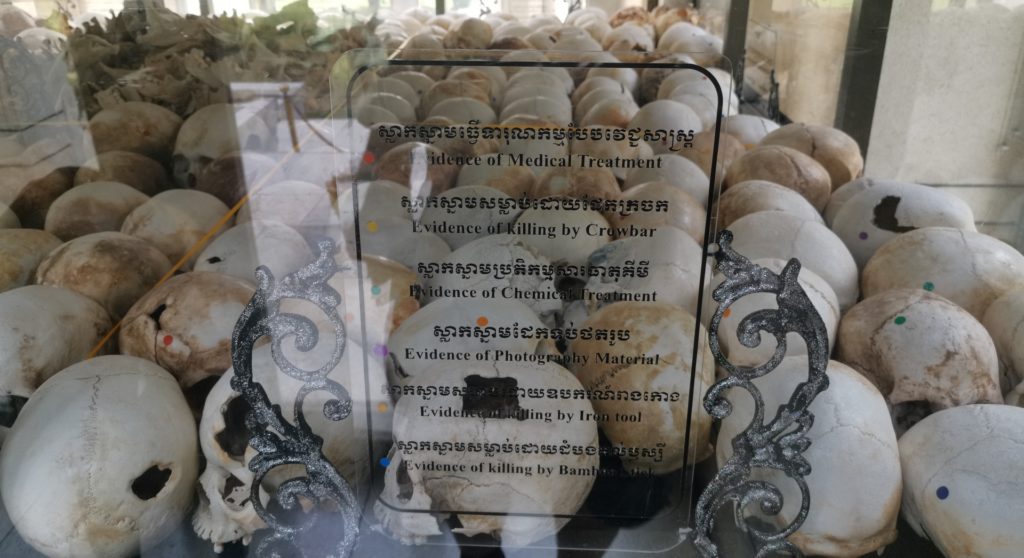Killing Fields (Phnom Penh) – an important place about the history of Cambodia
The recent history of Cambodia is strongly influenced by the events surrounding the reign of terror of the Khmer Rouge, who led a communist regime from 1975 onwards and whose genocide claimed the lives of one third of the Cambodian population. According to current estimates, around two million people died directly or indirectly as a result of Khmer Rouge rule. The dictator Pol Pot’s dream of a “self-sufficient peasant state” resulted in all Cambodians being forced to work in agriculture. The lack of efficiency and the cruelty of the regime led to famine, numerous deaths from starvation, executions and severe epidemics of disease. Many people also lost their lives due to the hard labor in the forced labor camps.

Skulls in an exhibition at the Killing Fields
Today, it is all the more important for visitors to Cambodia to understand this period in order to understand the history of the country. A visit to the “Killing Fields” is recommended. These are about three hundred sites throughout Cambodia that commemorate in particular the victims of the political mass murders of the Khmer Rouge
Among them were mainly professors, teachers, doctors and monks, as they represented the intellectual, the urban and the bourgeois, which the regime wanted to renounce: The goal was to return to the simple life of agriculture.
Today, when visiting the Killing Fields (for example, in “Choeung Ek” near Phnom Penh), one finds mainly the skulls and bones of the victims of the regime. There are also numerous photographs of the victims at the time of their imprisonment on display: What is particularly striking is that these were men, women and children who were imprisoned and tortured by the regime. There are also photographs of the murdered victims, taken by the camp guards themselves, to prove to the leadership that the execution orders were properly carried out. Here, too, the brute force, but also the general dilettantism of the regime (which does not bear the title “Stone Age Communism” for nothing) is evident: in order to save ammunition, prisoners were killed by violent blows against trees: an indescribably cruel death. Today the trees are marked with signs. In general, the Killing Fields sites are well signposted and document one of the darkest chapters in Cambodian history.
Visitors should allow sufficient time during a tour here, as the uncensored documentation (such as displaying pictures of the dead) is not light fare (which is quite intentional and in the spirit of remembrance).
At the Choeung Ek memorial, there is a rather no-frills stupa that is meant to commemorate the numerous victims who were brought to this site to be executed after spending time in the S21 camp.